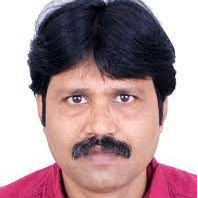Advanced Energy Materials for Sustainability
A special issue of Sustainability (ISSN 2071-1050). This special issue belongs to the section "Sustainable Materials".
Deadline for manuscript submissions: closed (29 February 2024) | Viewed by 6978
Special Issue Editors
Interests: piezoelectric and triboelectric energy harvester; magneto piezoelectric devices; bio-inspired materials; wireless power transfer; multienergy harvester; implantable devices
Interests: energy harvesting and storage; supercapacitors; polymer blends; nanocomposites
Interests: ferrites; magnetic materials; ferro/piezoelectric materials; interface engineering
Special Issues, Collections and Topics in MDPI journals
Special Issue Information
Dear Colleagues,
Growing energy demands, limited fossil fuel availability, and environmental concerns have promoted the study and development of new ecofriendly sustainable technologies that could provide humanity with a safe and sustainable future. Advanced materials with novel structures and new application directions have the greatest potential impact on the energy society. Bioinspired advanced materials can provide clean energy resources as well as a sustainable environment, which can play a crucial role in providing new strategies to accumulate different energies using different green resources. The current Special Issue is devoted to advanced-material-based energy harvesting and storage applications using different technologies, such as piezoelectric, triboelectric, solar, supercapacitors, etc., for sustainable society developments. The motivation of the present Special Issue is to explore future strategies in the abovementioned areas using bioinspired materials, which are of great interest to the scientific community, including academic researchers, environmentalists, materials scientists, and industrialists.
Dr. Sumanta Kumar Karan
Prof. Dr. Bhanu Bhusan Khatua
Dr. Sagar Shirsath
Guest Editors
Manuscript Submission Information
Manuscripts should be submitted online at www.mdpi.com by registering and logging in to this website. Once you are registered, click here to go to the submission form. Manuscripts can be submitted until the deadline. All submissions that pass pre-check are peer-reviewed. Accepted papers will be published continuously in the journal (as soon as accepted) and will be listed together on the special issue website. Research articles, review articles as well as short communications are invited. For planned papers, a title and short abstract (about 250 words) can be sent to the Editorial Office for assessment.
Submitted manuscripts should not have been published previously, nor be under consideration for publication elsewhere (except conference proceedings papers). All manuscripts are thoroughly refereed through a single-blind peer-review process. A guide for authors and other relevant information for submission of manuscripts is available on the Instructions for Authors page. Sustainability is an international peer-reviewed open access semimonthly journal published by MDPI.
Please visit the Instructions for Authors page before submitting a manuscript. The Article Processing Charge (APC) for publication in this open access journal is 2400 CHF (Swiss Francs). Submitted papers should be well formatted and use good English. Authors may use MDPI's English editing service prior to publication or during author revisions.
Keywords
- energy harvesting
- bioinspired materials
- piezoelectric
- triboelectric
- ferroelectric
- supercapacitors
- photovoltaics
Benefits of Publishing in a Special Issue
- Ease of navigation: Grouping papers by topic helps scholars navigate broad scope journals more efficiently.
- Greater discoverability: Special Issues support the reach and impact of scientific research. Articles in Special Issues are more discoverable and cited more frequently.
- Expansion of research network: Special Issues facilitate connections among authors, fostering scientific collaborations.
- External promotion: Articles in Special Issues are often promoted through the journal's social media, increasing their visibility.
- Reprint: MDPI Books provides the opportunity to republish successful Special Issues in book format, both online and in print.
Further information on MDPI's Special Issue policies can be found here.







